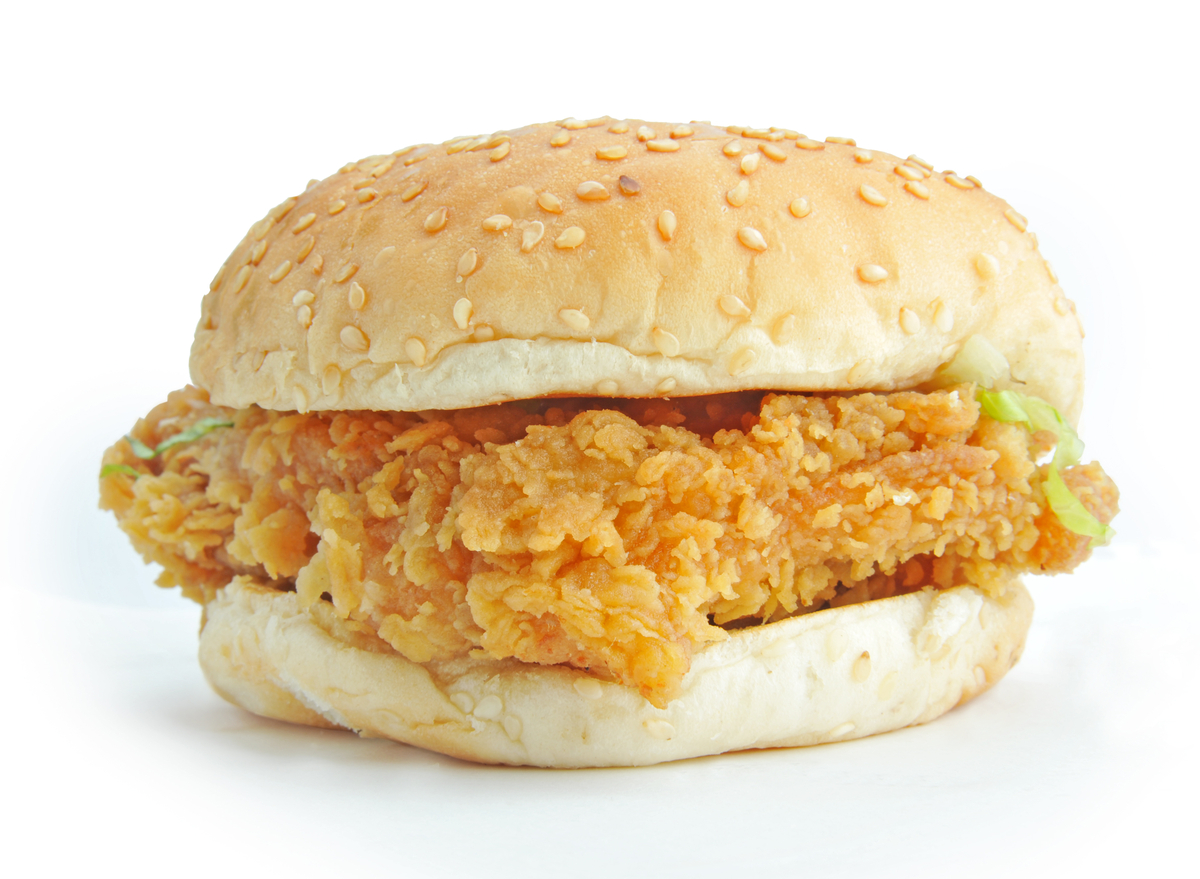This Potentially Deadly Bacteria Is Routinely Found In U.S. Chicken

When you’re hitting up the fast-food drive-thru for a chicken sandwich, or preparing some chicken breasts you picked up at your local grocery chain, you’re likely unaware that ingesting this beloved, omnipresent protein could be putting your life in danger. But based on information laid out in a recent report published by Vice, the lax food safety regulations of the chicken supply chain in the U.S. are exposing millions of Americans to potentially deadly bacteria.
And don’t miss 8 Fast-Food Chains With the Most Toxic Food Packaging.
According to the report, campylobacter and salmonella, two bacteria that are among the leading causes of foodborne illness in America, are routinely found in chicken produced by meat giants like Tyson and Perdue. And while certain levels of contamination are allowed under current food safety rules set by the United States Department of Agriculture (USDA), as many as 12 major poultry companies have exceeded these acceptable levels multiple times since 2018.
What’s worse, Vice states that when a batch of poultry is found to be exceeding the acceptable levels of salmonella or campylobacter contamination, it does not have to be recalled. One repercussion might be that the processing plant it came from ends up being temporarily shut down. This is especially worrisome considering the fact that between 2015 and 2020, U.S. companies sold tens of thousands of meat products contaminated with the harmful bacteria, and more than half of those samples contained antibiotic-resistant strains.
Salmonella causes 1.35 million infections, 26,000 hospitalizations, and more than 400 deaths in America every year, according to the Centers for Disease Control and Prevention (CDC), while campylobacter infects about 845,000 people each year, with more than 8,000 cases of hospitalization and more than 70 cases of death on the books. Salmonella is also the culprit of about 40% of the country’s cases of Guillain-Barré Syndrome, an auto-immune disease that causes nerve damage, muscle weakness, and sometimes paralysis.
Considering the potential for serious health issues caused by contaminated chicken, the regulations the USDA has put in place for chicken processing plants seem inadequate. According to Vice, about 15% of chicken parts coming out of a single plant can be positive for salmonella for the location to still meet acceptable safety standards. For campylobacter, that percentage is 7.7.
A spokesperson for the USDA’s Food Safety and Inspection Service (FSIS) told Vice: “FSIS is committed to reducing foodborne infections associated with FSIS-regulated products, including reduction of salmonella illnesses attributable to poultry.”
When preparing chicken at home, there are some best practices you can follow to avoid salmonella and campylobacter infections. Make sure you cook the chicken to a safe internal temperature of at least 165ºF before consuming it. Also, never wash raw chicken—it can spread the bacteria to other surfaces. Leftovers should be refrigerated promptly. Read more about the safe handling of poultry on CDC’s website.









